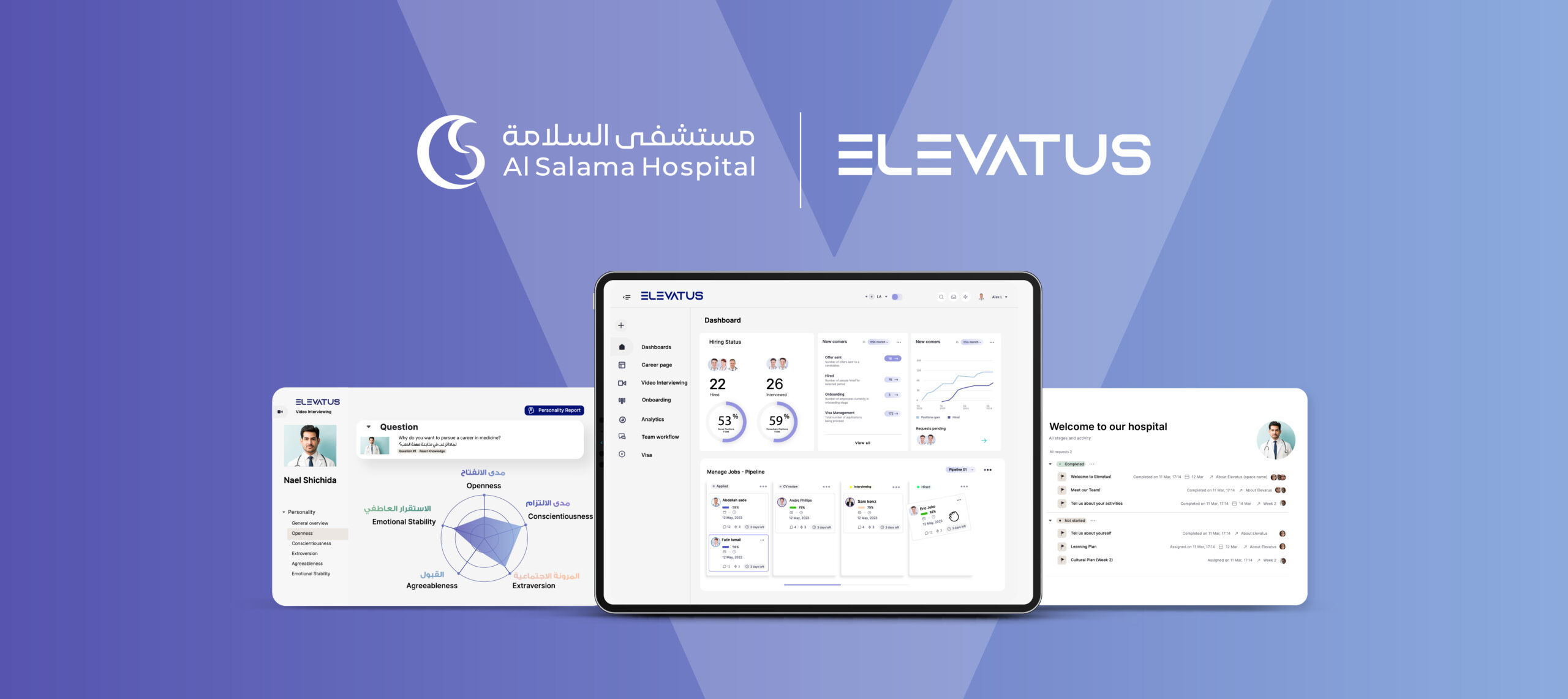
HR Resources
Employee Turnover vs Attrition: Decoding The Silent Killers of Company Growth
July 31, 2023
Reem Al-Tamimi
Content Writer
No matter the industry, the ebb and flow of employees is a normal part of any organization. Some departures are driven by aspirations for better opportunities, while others occur due to retirement, layoffs, or health-related constraints. While the terms employee turnover vs attrition are often used interchangeably, they represent distinct phenomena.
These HR metrics often cause confusion, leaving many scratching their heads. That’s why monitoring and understanding these concepts is crucial for assessing employee retention. A low attrition rate is the base of a healthy organization, with minimal voluntary departures, soaring morale, and a treasure trove of institutional knowledge.
In this blog, we will shine a light on the stark difference between employee attrition and turnover, unraveling their implications for your company’s growth. By unraveling these measures, you’ll be empowered to evaluate your organization’s performance, take actionable steps, and fortify your path to success. Get ready to decode the silent killers of company growth as we delve into the battle of employee turnover vs. attrition!
Employee Turnover and Attrition – Keys to Sustainable Company Growth
Tracking employee turnover and attrition goes beyond a simple HR task. It holds immense significance for a company’s overall growth and success. While both metrics are valuable, prioritizing turnover is crucial because it has the potential to silently kill company growth.
Turnover catches teams off guard, especially when employees leave voluntarily, requiring time and money to find replacements. According to Oracle NetSuite, companies lose, on average, 13% of their people every year due to voluntary turnover. Factors such as better pay, improved work-life balance, and proximity to their homes contribute to employees finding better opportunities elsewhere.
Analyzing data and finding ways to reduce turnover becomes vital for organizations. The cost of replacing an employee can range from one-half to two times the employee’s salary, emphasizing the financial impact of turnover. In fact, at a 100-person company with an average salary of $50,000, turnover and replacement costs could be as high as $2.6 million per year.


High turnover indicates underlying issues like poor onboarding, disengagement, and mismanagement. Onboarding plays a crucial role, as organizations with a strong onboarding process improve new hire retention by 82% and productivity by more than 70%. Additionally, managers account for 70% of the variance in employee engagement scores, highlighting their influence on turnover.
Luckily, next-generation recruitment software, such as EVA-REC, can play a significant role in addressing employee turnover and attrition. By leveraging advanced technology and analytics, this software enables companies to streamline their recruitment processes and make data-driven decisions. With the help of recruitment software, organizations can attract top talent, identify candidates who are likely to stay with the company for the long term and ensure a smooth and effective onboarding process. This way, companies can proactively address employee turnover vs attrition issues, improve employee satisfaction, and foster a stable and productive workforce.
Employee Turnover vs Attrition – Unlocking the Key Differences
When it comes to building a thriving organization, grasping the difference between employee turnover and attrition is essential. Although often used interchangeably, these terms hold distinct meanings that can impact company growth.
Let’s delve into the key differences in employee turnover vs attrition and unlock the secrets to building a thriving organization.
What is employee attrition?
Attrition, a strategic choice, occurs when employees voluntarily leave an organization and their positions remain unfilled. It’s influenced by factors such as career growth, job offers, retirement, or relocations. Unlike turnover, attrition doesn’t involve replacing the departing employee.
High turnover rates hint at disengagement, limited growth prospects, or hiring missteps. In contrast, attrition reveals retiring or resigning employees not being replaced, raising concerns about knowledge transfer and an aging workforce.
Aim for a low attrition rate, with experts suggesting 10% or less for healthy organizations. A high attrition rate leads to a loss of institutional knowledge, instability, and dampened morale.
By unraveling attrition rates, HR professionals gain valuable insights into employee retention. They can then make informed decisions to nurture a stable and thriving workforce.
What is employee turnover?


Turnover is often misunderstood as the sheer number of employees leaving an organization in a year. However, it’s actually about how swiftly a company fills the departing employees’ shoes within a specific timeframe.
Turnover should only count when vacancies are filled. If an employee leaves and their position remains unoccupied, that falls under attrition or a deliberate reduction in the workforce.
When employees depart, it’s up to the hiring managers and recruiting teams to find replacements. Turnover measures the rate at which you seek to replace employees who leave, whether it’s voluntary or involuntary.
Calculating turnover is simple. For instance, if you have an average of 100 employees over twelve months and 15 employees leaving, your annual turnover rate would be 15%.
Use this formula:
Employee turnover (%) = (total number of dropouts ÷ average number of employees) x 100%. Multiply the result by 100 to get the percentage.
Remember, turnover rates vary by industry, ranging from 10% in the energy sector to 60% in retail. Technology companies typically hover around 13%.
Overall, understanding turnover rates empowers organizations to gauge employee retention and make informed decisions to foster a stable and flourishing workforce.
Impact of employee attrition vs turnover
Understanding employee turnover and attrition difference is essential for any organization. These two terms represent different phenomena that can significantly impact your company. Let’s explore the difference between employee turnover vs attrition and delve into how they can have an impact on your organization.
Replacement of Employees:
- Turnover: When it comes to turnover, departing employees are intended to be replaced, whether they leave voluntarily or involuntarily.
- Voluntary Attrition: Voluntary attrition occurs when employees choose to leave the organization on their own accord, and their positions remain unfilled.
Impact on the Organization:
- Turnover: Turnover often aligns with cost-cutting measures, such as reducing the workforce through layoffs or opting not to replace departing employees. It aims to minimize expenses.
- Voluntary Attrition: In the case of voluntary attrition, employees might retire, join other companies, or pursue further education. It may not have the same cost-cutting intention as turnover, and its impact on the organization can vary.
Control:
- Turnover: Companies have more control over turnover as it involves the deliberate decision to replace employees based on strategic business needs.
- Voluntary Attrition: Voluntary attrition may be influenced by external factors or individual choices, making it less within the organization’s control.
Cost implications:
- Turnover: it entails additional expenses for hiring replacements, which can be higher than regular hiring costs.
- Voluntary attrition: it may result in cost reductions when positions are left unfilled.
Overall, high turnover and attrition rates can be a big problem for companies in different industries. Let’s look at some real-life examples of employee turnover vs attrition. In the professional services industry, accounting firms are having a hard time keeping employees because of burnout and low pay. This makes it difficult to retain their best talent. Tech companies also face high turnover rates, which can hurt productivity and require constant hiring and training. Industries like entertainment, accommodation, and retail rely on frontline workers, and when they leave frequently, it disrupts operations and customer service. These examples show how high turnover can cause real problems for companies and why they need to find ways to keep their employees happy and engaged.
Master the Beat: Navigating Employee Turnover vs Attrition with Ease


So, it’s time to take center stage and conquer the challenges of employee turnover vs. attrition. Invest wisely to prevent and manage these issues with finesse.
Create a workplace that sings with positivity and appreciation, offering growth opportunities and competitive perks. But don’t forget the rhythm! Keep a close eye on the dynamics of employee turnover vs. attrition. Analyze the data, spot patterns, and take proactive steps to maintain a harmonious workforce. With a strategic approach, you’ll lead the way, avoiding unwanted departures and building a vibrant and dedicated team.
Supercharge your hiring process! Streamline, elevate candidate experience, and unlock powerful insights to slash turnover and attrition.
EVA-REC is a top-rated recruitment software that helps enterprise companies like RE/MAX, Amazon, Samsung, Virgin Mobile & Al Habib Medical Group build skillful workforces and hire top talent at scale. Allowing them to find and hire the people they can depend on. EVA-REC’s world-class features ramp up team collaboration, automate the hiring process, streamline communication, eliminate admin tasks, create a memorable hiring experience, and help you make the right hires every time. Recruit top talent faster, fairer, and more efficiently with EVA-REC today! Request a free demo now!
Turn top talent to employees fast
Hire, assess, onboard and manage top talent for every job. See how Elevatus streamlines everything; from acquire to new hire.
Request a demoAuthor
Reem Al-Tamimi
Don't miss a thing!
Stay one step ahead. Subscribe and get the latest updates, news, and insights from Elevatus straight to your inbox.






